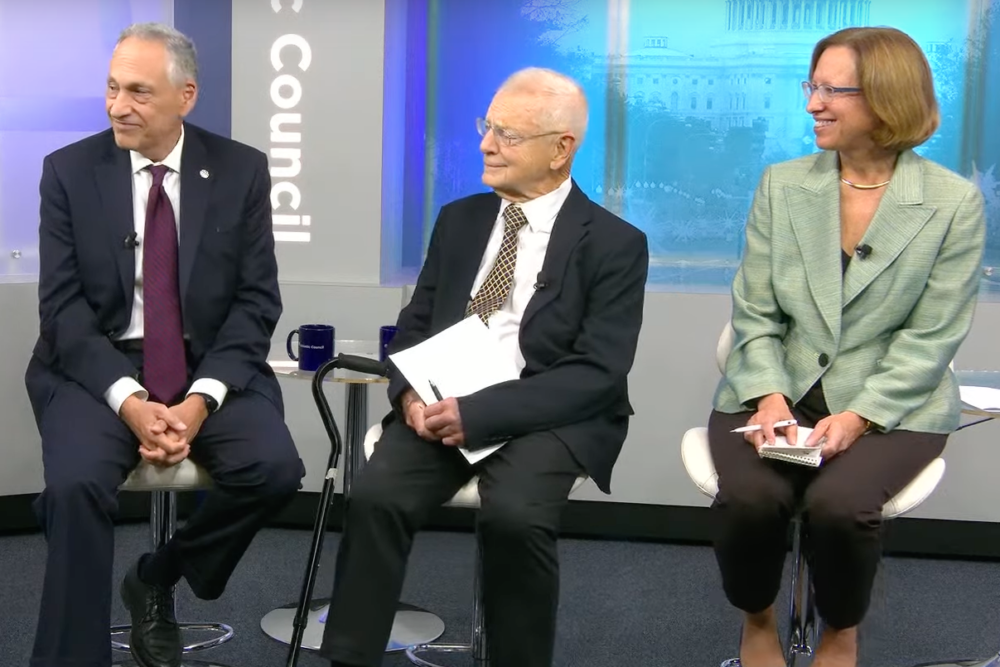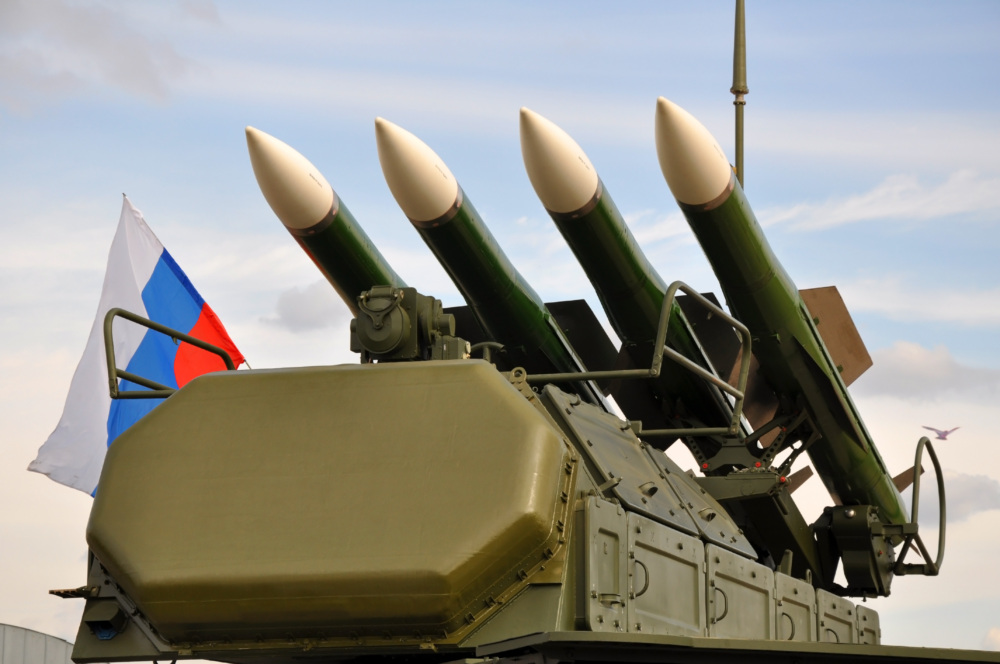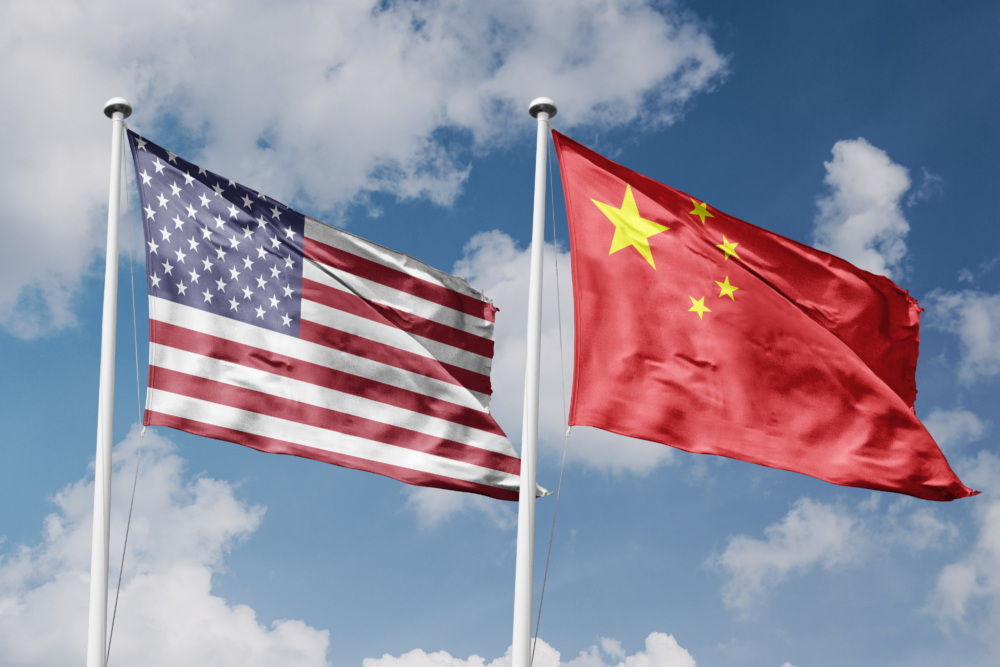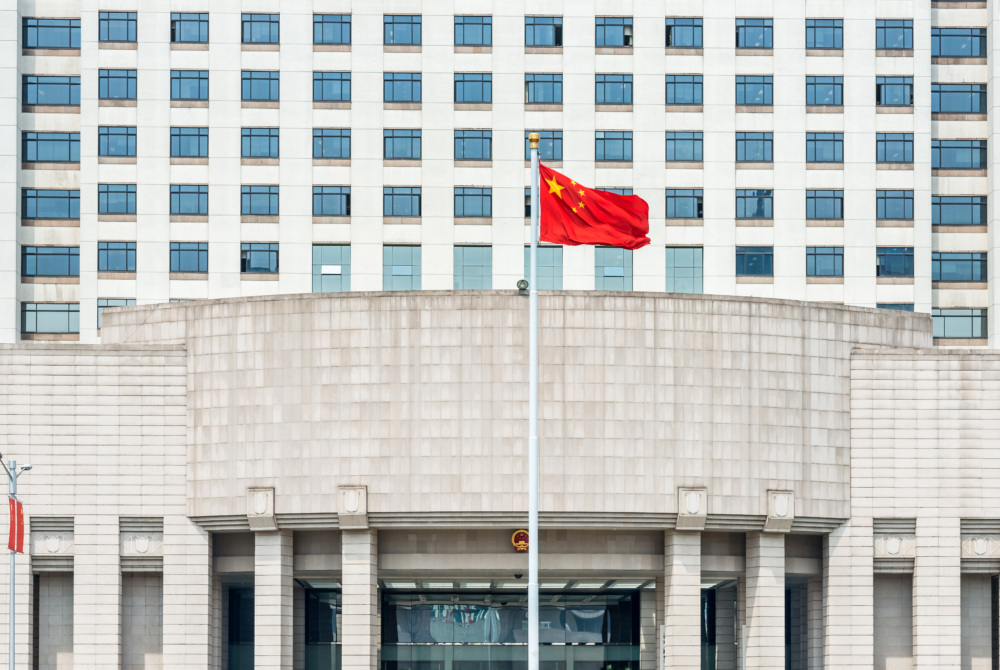
Caroline Russell
Intern, Global Nuclear Policy Program
Atomic Pulse
Are arms control agreements possible in the current geopolitical context? Is the planned U.S. nuclear modernization program sufficient to deter rising threats from Russia and China? Given the need for answers to important questions like these, in 2022, bipartisan leaders of Congress selected 12 experts to assess U.S. nuclear force posture and provide recommendations for the future. This Congressional Commission on the Strategic Posture of the United States published its report on U.S. nuclear policy and strategy on October 12, 2023.
Lynn Rusten, vice president of NTI’s Global Nuclear Policy Program and fellow nuclear experts The Hon. Walter B. Slocombe, a former Under Secretary of Defense for Policy and Atlantic Council board director, and Robert Soofer, a senior fellow at the Atlantic Council and former Deputy Assistant Secretary of Defense for Nuclear and Missile Defense Policy, shared their reactions to the important new report during a panel event at the Atlantic Council.
What Does the Strategic Posture Commission Report Say?
The report argues that the United States needs to act urgently to respond to the changing threat environment and anticipate two near-peer rival nuclear powers in Russia and China. It calls for the government to:
The report also includes recommendations on arms control and risk reduction, though it portrays arms control as ancillary to U.S. nuclear requirements, rather than recognizing the helpful role that arms control efforts can play in reducing threats and thus U.S. requirements for nuclear weapons. Taken together, the report’s 81 recommendations have been interpreted by many as a call for a U.S. nuclear build-up in the near term.
Rusten’s View
During the Atlantic Council event, Rusten applauded the report’s bipartisan call for the United States to maintain its global leadership role and commitment to strong alliances, and she agreed with the threat assessment underpinning the report. However, she faulted the authors for understating the value of non-military tools, including diplomacy and arms control, in preventing the most dangerous potential outcomes discussed in the report from materializing. Rusten probed, “What will Russia be doing in the absence of arms control, and conversely, do we have an interest in constraining Russia, and at what level? Further, do we need any additional capabilities to deal with China? And when?”
In Rusten’s eyes, the report is a “worst case defense planning document” that should not be taken on face value as an unassailable prescription for necessary near-term actions. Rather, the U.S. government should turn to diplomacy and arms control measures to incentivize China and Russia to forgo a “worst case scenario pathway.” She argued that we should be thinking more about mitigating risks with Russia and China, which could obviate the need for many of the costly and potentially destabilizing recommendations outlined in the report. “We should be looking at arms control, broadly defined, not just legally binding agreements, but cooperative arrangements, parallel commitments, risk reduction,” she said.
The report is ambiguous or silent on the size and composition of Russian and Chinese nuclear forces that would require the United States to change its own planned nuclear posture; the report also does not consider how those countries might respond to the United States pursuing the recommendations it outlines. Rusten emphasized that because the report is not clear on what precisely should trigger the United States to go beyond its current nuclear modernization plan, it is not possible to determine whether and at what point the United States needs a different or larger nuclear capability.
Regarding the report’s suggestion that the United States needs additional theater nuclear capabilities to deter Russia and China, Rusten maintained that the United States already has sufficient low-yield air- and sea-based delivery capabilities including many nuclear capabilities in the Indo-Pacific region to assure allies and deter China, and that enhanced conventional capabilities should be the primary means to reinforce deterrence and the U.S. commitment to defend allies, rather than additional nuclear capabilities.
Ending with a note of optimism, Rusten stated that while the prospects for arms control seem dim in the current context, there is hope for the future. The time for the United States to define its objectives and proposals for mutual restraint is now.
Sign up for our newsletter to get the latest on nuclear and biological threats.
Putin’s announcement is a significant blow to the last remaining strategic arms control agreement between the world’s two largest nuclear powers and to the fraying Euro-Atlantic security architecture more broadly.
NTI hosted Dr. Tong Zhao for a virtual seminar to discuss the future of U.S.-China nuclear relations and opportunities for reducing nuclear risks between both countries.
Amid uncertainty around China’s expanding nuclear program and silence from Beijing about the intent behind the build-up, a new report offers details about China’s nuclear program that suggest significant implications for U.S. and global security.



